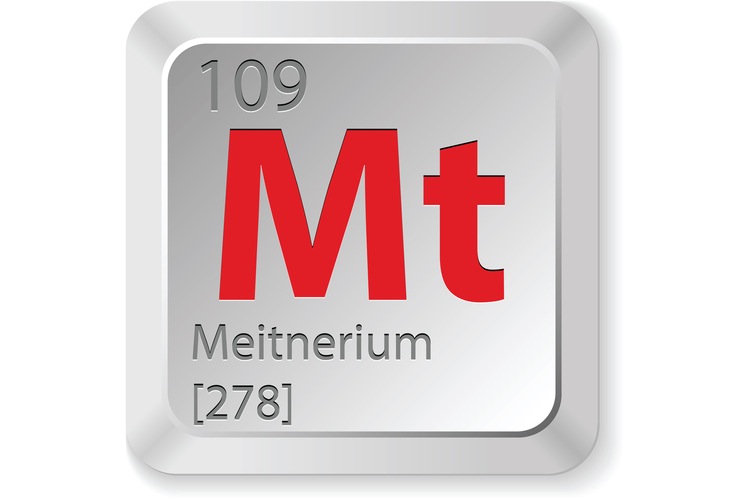Facts About Meitnerium

Atomic Number: 109 Atomic Symbol: Mt Atomic Weight: [278] Melting Point: Unknown Boiling Point: Unknown
Word origin: Meitnerium is named for scientist Lise Meitner.
Discovery: The element was discovered in Darmstadt, Germany, in 1982 at Heavy Ion Laboratory. The team of Peter Armbruster and Gottfried Münzenber first produced and identified it. This experiment was significant because, in addition to producing a new element, it demonstrated the feasibility of using fusion to make new, heavy nuclei.
Properties of meitnerium
Meitnerium is a radioactive, synthetic element about which little is known. It is classified as a metal and is a solid at room temperature.
Meitnerium has seven isotopes with known half-lives. The most stable is meitnerium-278 (278Mt), with a half-life of about eight seconds. It decays into bohrium-274 (274Bh) through alpha decay.
The atomic weight for manmade transuranium elements is based on the longest-lived isotope. These atomic weights should be considered provisional since a new isotope with a longer half-life could be produced in the future. [See Periodic Table of the Elements]
Sources of meitnerium
Meitnerium is produced artificially. It can be made by bombarding atoms of bismuth-209 (209Bi) with ions of iron-58 (58Fe) using a linear accelerator. Armbruster and Münzenber bombarded their target for a week in order to produce a fused nucleus.
Uses of meitnerium
Only small amounts of meitnerium have ever been made. Currently, it is only used in scientific study.
(Sources: Los Alamos National Laboratory, Jefferson Lab)
Sign up for the Live Science daily newsletter now
Get the world’s most fascinating discoveries delivered straight to your inbox.











